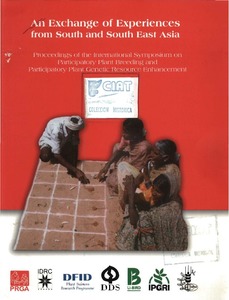Participatory plant breeding in rice in Eastern India
Abstract
This paper describes a participatory plant-breeding (PPB) program for rice in eastern India, targeted at a range of ecosystems. Only a few crosses with large populations were used. Most resources were used on selection by farmers among progeny bulks grown on a research station, but farmers also selected within bulk populations on their fields. Farmers (both male and female) from villages served by the KRIBHCO Indo-British Rain fed Farming Project made selections among bulk progenies derived from a cross between Kalinga III and IR64 that were grown at Ranchi, Bihar, in the main (rainy) season of 1998. The three most selected progeny bulks were promoted to an AH India Co-ordinated Rice Improvement Project varietal trial in the main season of 1999. One of these was Ashoka 200F, me result of selection within on F4 bulk in a farmer's field the performance of all three varieties in the initial varietal trial al Birsa Agricultural University (BAU), Ranchi, in the main season of 1999 was good. Ashoka 200F yielded 2.90 ha’ compared 10 1.95 t ha" for Kalinga III. AII Three entries were as early and slender-grained as Kalinga IlI, and all were more resistant to lodging in the main season of 2000, these varieties will be tested in a participatory varietal selection program in six project villages. The approach of using a low-cross-number, large-population breeding strategy with both consultative and collaborative participation has rapidly improved Kalinga IIl, the most widely adopted upland rice in India. Among other strategies, we have used modified-bulk population breeding lo provide heterogeneous and homozygous bulks to farmers for selection.

